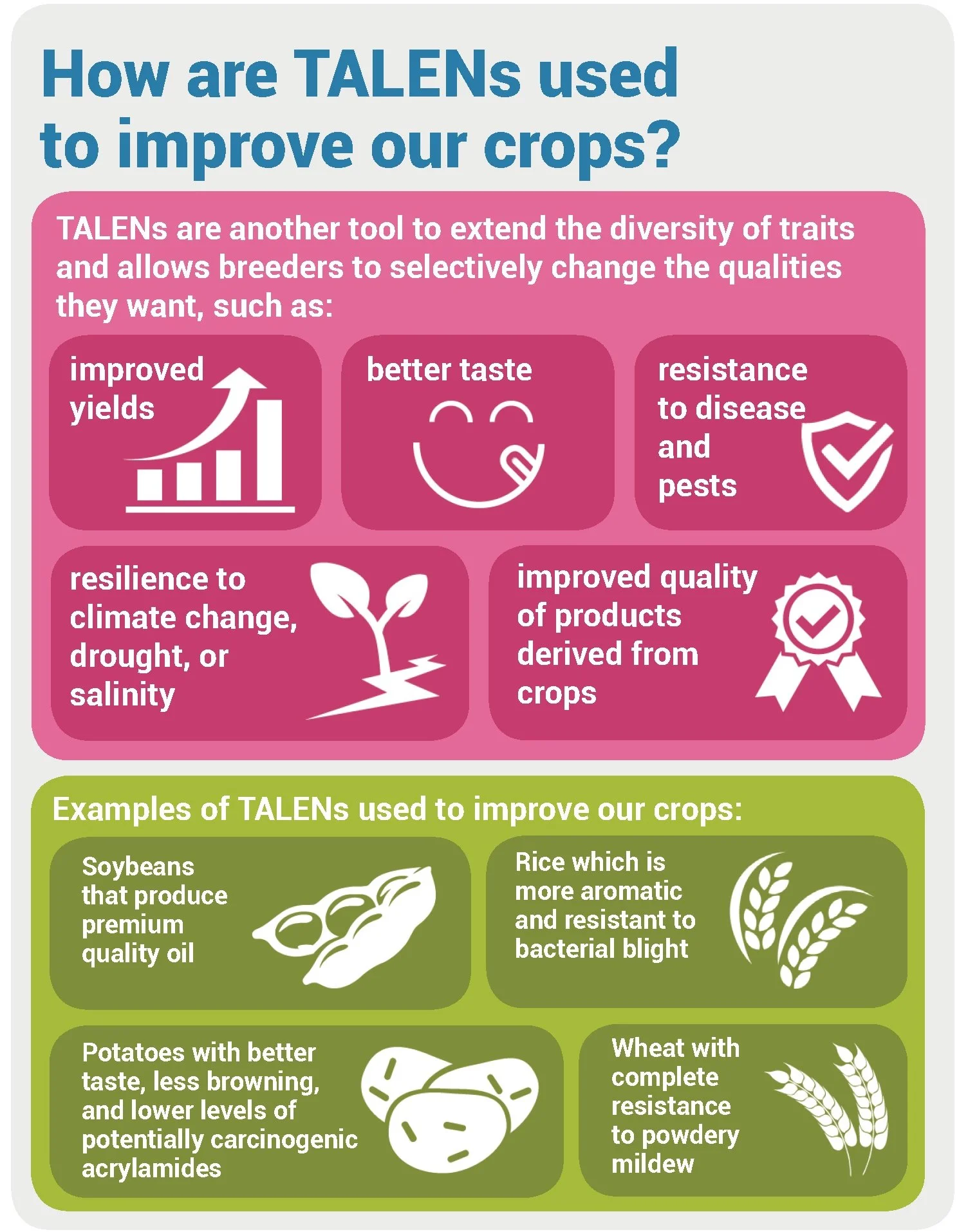
Gene Editing
The TALEN platform enables scientists to alter any DNA sequence to edit specific desired (or undesired) traits. It can be used to add or remove gene function and has been used to modify a variety of crops for different traits and is applicable to all major crop types.
TALEN gene editing tools are part of a suite of targeted DNA tools that can up- and down-regulate genes and modify chromatin, based on the TAL Code technology.
The Challenge
The development of genome modifying tools, and particularly gene editing tools, over the past 30 years has revolutionized efforts to improve plants. These techniques allow scientists to modify DNA with tremendous specificity.
Early gene editing tools, such as meganucleases and zinc finger nucleases were cumbersome and costly to produce and implement.
Another issue plaguing gene editing platforms has been tight control of access to these tools, limiting uses to large companies.
The Strategy
The speed and ease of creating targeted DNA changes has accelerated in recent years, with new platforms like TALENs and CRISPR, the best known of the tools. Together, they have led to a gene editing revolution.
While the CRISPR-Cas system is widespread, it has been subject to tight control.
Creating broad benefit for scientists and agriculture is at the core of 2Blades’ philosophy as a non-profit company and why we launched a tiered licensing strategy for the TALEN platform in 2011. TALENs have been widely licensed at reasonable terms, work with high efficiency, and have been used to create numerous valuable traits.
License access is available to TALENs on a tiered cost basis for for-profit entities and no-cost basis for non-profit organizations.
The Science
Transcription activator-like effectors (TALEs) are proteins made and used by plant pathogenic bacteria to control plant genes during infection. In nature, TALEs bind to plant DNA sequences and activate genes. Binding is targeted to specific DNA sequences through amino acid repeats of the TALE protein that recognize specific DNA bases by a set of biochemical rules or “code”. Researchers can use this code to customize TALEs and TALE protein fusions to bind to any desired DNA sequence.
TALENs are protein combinations composed of two parts; one part is the TALE that targets the protein to a specific DNA sequence and the second part is a nuclease (N) that cuts DNA.
TALENs cut the DNA, making a precise double strand break. This break initiates the plant cell’s existing DNA repair mechanisms, which may remove DNA bases around the cut or incorporate new DNA at the position of the break. The outcome is either small insertions or deletions that create sequence diversity, as often found in nature, leading to new functions or inactivating existing ones. Additionally new genes can be inserted. These molecular scissors provide incredibly precise means to fine-tune traits in a targeted, predictable fashion anywhere in the genome.
Like CRISPR, TALENS are extremely precise but TALENs have additional capabilities, such as targeting any DNA sequence, discriminating between methylated and unmethylated DNA targets, and modifying DNA within organelles such as mitochondria.




